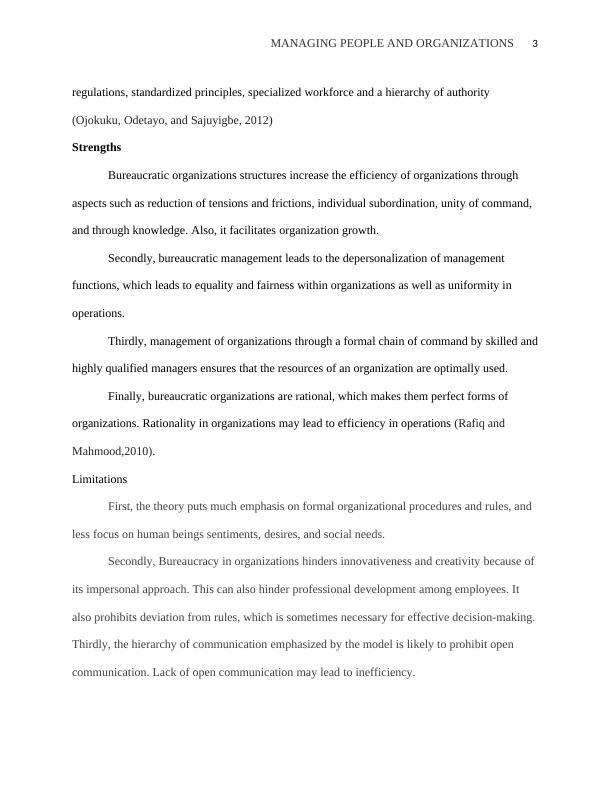Managing People and Organizations
Understanding the importance of business ethics in managing people and organizations in the context of comparative business ethics and social responsibility.
8 Pages1316 Words82 Views
Added on 2023-03-30
About This Document
The concept of management in organizations has evolved over the years as organizations shift from hierarchical approaches to more human-centered approaches. This report analyzes the bureaucratic and human relations theories of management.
Managing People and Organizations
Understanding the importance of business ethics in managing people and organizations in the context of comparative business ethics and social responsibility.
Added on 2023-03-30
ShareRelated Documents
End of preview
Want to access all the pages? Upload your documents or become a member.
Organizational Culture and Management Approach
|7
|2218
|170
Organizational Theory and Management Ideologies
|7
|1721
|345
Introduction to Leadership
|5
|893
|496
Introduction to Management - Assignment Solved
|4
|1818
|94
Post Bureaucracy: Understanding and Analyzing Functionality of Bureaucratic Organizations
|21
|1241
|114
Building organizational capacity in health care
|10
|2301
|474



